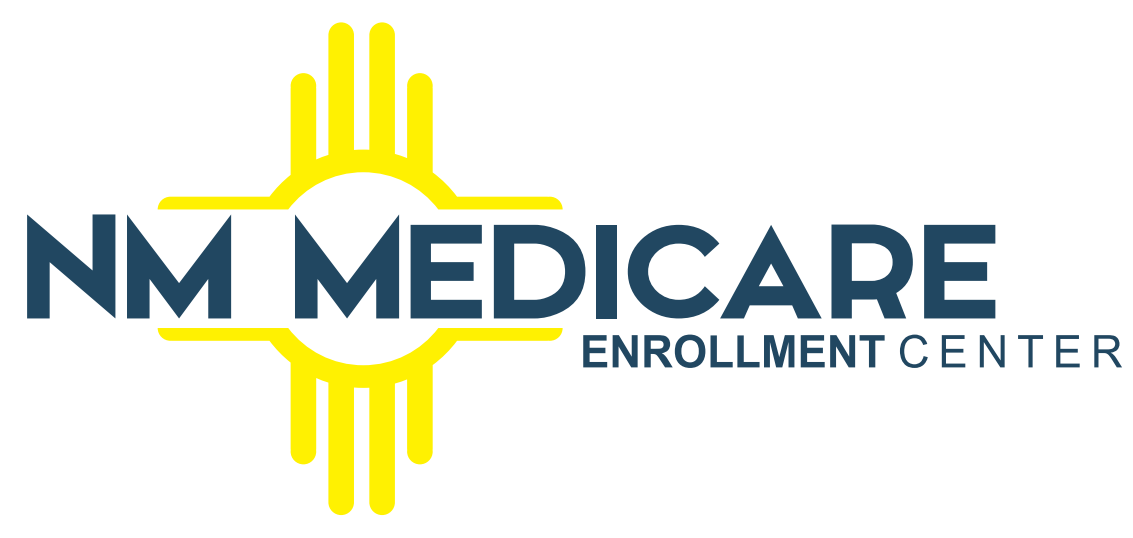Navigating the complexities of Medicare and long-term care can be daunting. Many people assume that Medicare, a vital safety net for seniors and individuals with disabilities, will cover all their healthcare needs, including long-term care. However, the reality is more nuanced. Medicare provides limited coverage for long-term care, leaving significant gaps that could impact your financial and health planning. In this article, we’ll explore what Medicare covers, what it doesn’t, and how you can prepare for potential long-term care needs.
What Is Long-Term Care?
Long-term care refers to a range of services and support systems designed to assist individuals who struggle with daily living activities due to chronic illness, disability, or cognitive impairments such as dementia. Unlike acute medical care, which is aimed at treating a specific illness or injury, long-term care is focused on providing ongoing assistance to improve the quality of life.
Types of Long-Term Care Services
- Custodial Care: Assistance with activities of daily living (ADLs), such as bathing, dressing, and eating.
- Skilled Nursing Care: Medical care provided by licensed nurses or therapists, often in a healthcare facility.
- Home Health Care: Medical or non-medical care provided in the individual’s home.
- Adult Day Care: Social and health-related services provided during the day for individuals needing supervision.
- Hospice Care: Care focused on comfort and quality of life for individuals with terminal illnesses.
Understanding Medicare’s Role in Long-Term Care
Medicare, the federal health insurance program primarily for people aged 65 and older, plays a crucial role in covering healthcare expenses. However, when it comes to long-term care, Medicare’s coverage is quite limited.
Medicare Part A: Inpatient Care and More
Medicare Part A covers hospital stays, skilled nursing facility care, hospice care, and some home health care. But when it comes to long-term care, the benefits are restricted:
Skilled Nursing Facility (SNF) Care
- What’s Covered: If you’ve been hospitalized for at least three days, Medicare Part A covers short-term stays in a skilled nursing facility. The first 20 days are fully covered.
- Coinsurance Requirement: From days 21 to 100, you are responsible for a daily coinsurance payment.
- No Coverage Beyond 100 Days: After 100 days, Medicare stops covering the costs, leaving you to pay out-of-pocket or through other means.
Home Health Care
- What’s Covered: Medicare covers home health care services if they are deemed medically necessary and prescribed by a doctor. Services may include part-time nursing care, physical therapy, and occupational therapy.
- Limitations: Coverage is typically limited to short-term, intermittent care and does not extend to full-time custodial care.
Hospice Care
- What’s Covered: For those with a terminal illness and a life expectancy of six months or less, Medicare Part A covers hospice care, focusing on comfort and pain relief rather than curative treatment.
- Special Conditions: The care must be provided by a Medicare-approved hospice facility, and the individual must agree to forego further curative treatments.
What Medicare Doesn’t Cover
While Medicare provides some coverage for short-term skilled care, it does not cover the bulk of long-term care services, leaving significant gaps in coverage.
Custodial Care
- What’s Not Covered: Medicare does not cover custodial care, which includes assistance with ADLs like bathing, dressing, and eating. Custodial care is often needed by those who are elderly or disabled, and it is one of the most common forms of long-term care.
- Where It’s Provided: Custodial care is typically provided in nursing homes or through in-home caregivers, and can be very expensive without insurance.
Assisted Living Costs
- What’s Not Covered: Medicare does not cover room and board in assisted living facilities.
- Limited Services: While some services like physical therapy or skilled nursing care may be covered if medically necessary, the overall costs of living in these facilities are not.
Private Duty Nursing
- What’s Not Covered: Medicare does not cover private duty nursing, which is when a nurse is hired to provide one-on-one care over an extended period.
- Implications: This type of care can be particularly costly, making it essential to plan ahead if you anticipate needing this level of support.
Adult Day Care
- What’s Not Covered: Adult day care, which provides social interaction and supervision during the day, is not covered by Medicare.
- Respite for Caregivers: Although adult day care can provide much-needed respite for family caregivers, the costs must be covered out-of-pocket or through other insurance.
Planning for Long-Term Care: What Are Your Options?
Given the limited coverage Medicare provides for long-term care, planning is crucial. Here are some strategies to consider:
Long-Term Care Insurance
- What It Is: Long-term care insurance is a policy specifically designed to cover the costs associated with long-term care.
- When to Buy: The best time to purchase a policy is when you are younger and healthier, as premiums increase with age and pre-existing conditions can make it more difficult to qualify.
- Coverage Options: Policies vary, but most cover services like custodial care, skilled nursing care, and sometimes even home health care.
Medicaid
- What It Covers: Medicaid is a joint federal and state program that provides healthcare coverage, including long-term care, to those with low income and limited assets.
- Eligibility: Qualifying for Medicaid can be complex, as you must meet strict income and asset requirements.
- Medicaid Planning: Some people engage in “Medicaid planning,” which involves legally restructuring assets to meet eligibility requirements. Consulting with a financial advisor or elder law attorney is advisable.
Personal Savings and Investments
- Building a Nest Egg: Setting aside funds specifically for potential long-term care needs can be a proactive way to ensure you have the resources when needed.
- Considerations: Factor in inflation, potential investment growth, and your overall financial situation when planning.
Family Caregiving
- The Role of Family: Family members often provide care for their loved ones, either in their own homes or the homes of their loved ones.
- Impact on Caregivers: While family caregiving can be cost-effective, it can also be emotionally and physically demanding. Planning for respite care and support for caregivers is essential.
Hybrid Life Insurance with Long-Term Care Riders
- What It Is: Some life insurance policies offer long-term care riders, allowing you to use part of the death benefit to pay for long-term care expenses.
- Benefits: These hybrid policies can be a good option if you want to ensure that your premiums aren’t “wasted” if you never need long-term care, as the unused portion will go to your beneficiaries.
How to Choose the Right Plan for You
Choosing the right plan for long-term care involves considering various factors, including your health, financial situation, and personal preferences.
Assessing Your Health Needs
- Current Health Status: If you have a chronic condition or family history of illnesses that may require long-term care, this should be a significant factor in your planning.
- Future Projections: Consider how your health may change over time and what types of care you may need as you age.
Evaluating Your Financial Situation
- Income and Assets: Assess your current income, savings, and investments to determine how much you can allocate towards long-term care planning.
- Budgeting for Premiums: If considering long-term care insurance or hybrid policies, ensure the premiums fit within your budget without compromising other financial goals.
Considering Your Preferences
- Care Setting: Would you prefer to receive care at home, in an assisted living facility, or a nursing home? Your preference can influence the type of coverage you seek.
- Involvement of Family: Discuss with family members their willingness and ability to provide care if needed.
Common Misconceptions About Medicare and Long-Term Care
Many people have misconceptions about what Medicare covers when it comes to long-term care. Clarifying these misunderstandings can help you make more informed decisions.
Myth: Medicare Covers All Long-Term Care Needs
- Reality: Medicare only covers short-term, medically necessary care. Long-term custodial care, which makes up the majority of long-term care services, is not covered.
Myth: Medicaid Is Easily Accessible
- Reality: Qualifying for Medicaid requires meeting strict income and asset limits. Many individuals may need to spend down their assets or engage in Medicaid planning to qualify.
Myth: Family Caregiving Is Always a Feasible Option
- Reality: While family caregiving can be a viable solution, it can also be extremely demanding and may not be sustainable in the long term without additional support.
Steps to Take Today
Taking proactive steps today can help you avoid financial strain and ensure you receive the care you need when the time comes.
Consult with a Financial Advisor
- Why It Helps: A financial advisor can help you evaluate your current financial situation, explore insurance options, and create a long-term care plan that fits your needs.
- What to Expect: Expect a comprehensive analysis of your income, assets, and potential care costs.
Explore Long-Term Care Insurance
- Why It’s Important: Long-term care insurance can provide peace of mind knowing that your care needs will be covered without depleting your savings.
- How to Get Started: Research different policies, compare benefits and premiums, and consider consulting with an insurance broker.
Have a Conversation with Your Family
- Why It Matters: Open communication with family members about your long-term care preferences and potential roles they may play is crucial.
- What to Discuss: Discuss care preferences, financial contributions, and how to share caregiving responsibilities.

Conclusion
Understanding Medicare’s limitations on long-term care is crucial for making informed decisions about your future. Whether you’re planning ahead or facing immediate healthcare needs, having the right plan in place can make all the difference. At New Mexico Medicare Plan Advisor, we can help you find a Medicare plan that suits your specific needs. If you have any questions or need guidance, our experienced agents are here to assist you every step of the way. Don’t wait—reach out to us today and secure your future with confidence.
FAQs
- What does Medicare cover in a skilled nursing facility? Medicare Part A covers short-term stays in a skilled nursing facility following a qualifying hospital stay, with full coverage for the first 20 days. Beyond that, there’s a daily coinsurance payment until day 100, after which coverage ends.
- Can Medicare pay for home health care? Yes, Medicare covers medically necessary home health care services, but this is typically limited to part-time or intermittent care rather than full-time custodial care.
- Does Medicare cover assisted living costs? No, Medicare generally does not cover room and board in assisted living facilities, though it may cover certain medical services if they are deemed medically necessary.
- How can I prepare for long-term care costs? Consider purchasing long-term care insurance, exploring Medicaid options, setting aside personal savings, and discussing potential caregiving roles with your family.
- What are the main differences between Medicare and Medicaid? Medicare is a federal program primarily for individuals aged 65 and older, while Medicaid is a joint federal and state program for those with low income. Medicaid covers more long-term care services but has strict eligibility requirements.



